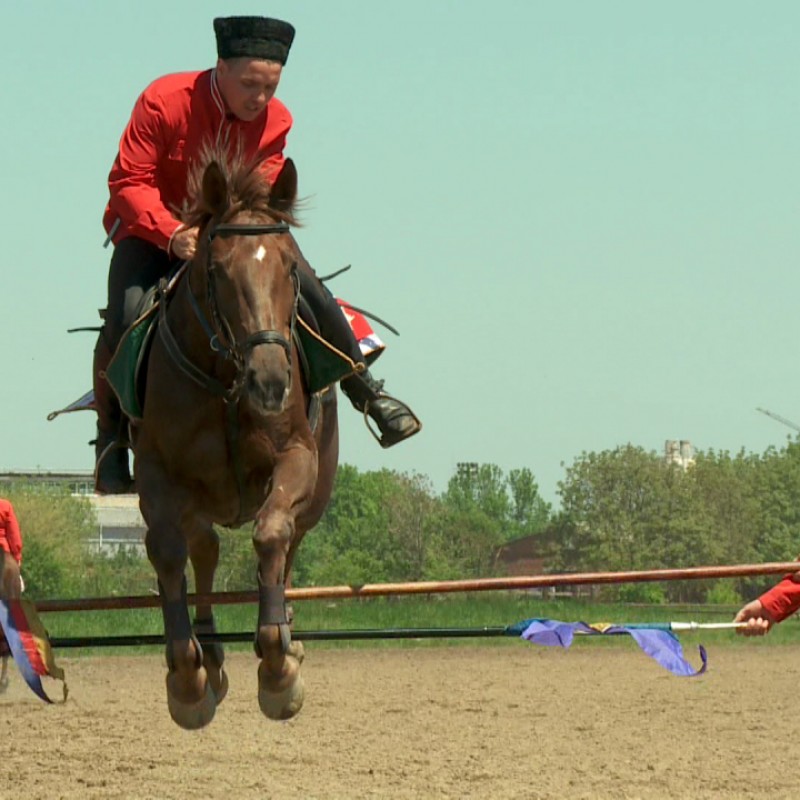
Ethnography
Ethnography
Year 2012
Duration 00:25:35
Practically every city in Russia is famous for some historical item. Foreign tourists even joke that you can't fit all of Russia's souvenirs into just one bag. It is tempting however, to see, touch and even taste many different things the country has to offer. One such souvenir is the world-famous Vologda butter. Not even professionals can figure out the secret to its nutty flavour. Some believe it to be in the succulent grasses Vologda cows eat. Others are convinced that it was Nikolai Vereshchagin that instigated a culinary revolution while trying to heat up cream. The Russian Travel Guide channel set off to the the old city, where northern Russia is said to begin, to find out whose hypothesis might be true. Krasnodar tea marks the beginning of the south for many. Until the 20th century very few believed that the whimsical plant would be able to grow in the harsh Russian climate. Peasant Iyuda Koshman however, managed to accomplish this difficult feat. People nowadays drink Krasnodar tea not only in Russia, but also in Japan. The drink is loved for its unique taste and abundance of healthy elements. In the south, these tea leaves are still picked by hand, fermented and hand-dried in order to ensure that each leaf gets the proper, delicate attention it deserves. The city of Kostroma is known throughout Europe for its gifted weavers. The local linen mill however stopped producing handmade pieces long ago; it was too much hard work to turn the unruly flax into the finest cambric, lace and canvas. Today Kostroma linen makes up one of every three metres of linen fabrics in Russia and one of every six in the countries of the European Union. Furthermore, without Kostroma linen, the Tretyakov Gallery would not exist. Collector and manufacturer Pavel Tretyakov acquired paintings by some of Russia's most famous and talented artists with the income he earned selling Kostroma linen.
Year 2012
Duration 00:25:35
Practically every city in Russia is famous for some historical item. Foreign tourists even joke that you can't fit all of Russia's souvenirs into just one bag. It is tempting however, to see, touch and even taste many different things the country has to offer. One such souvenir is the world-famous Vologda butter. Not even professionals can figure out the secret to its nutty flavour. Some believe it to be in the succulent grasses Vologda cows eat. Others are convinced that it was Nikolai Vereshchagin that instigated a culinary revolution while trying to heat up cream. The Russian Travel Guide channel set off to the the old city, where northern Russia is said to begin, to find out whose hypothesis might be true. Krasnodar tea marks the beginning of the south for many. Until the 20th century very few believed that the whimsical plant would be able to grow in the harsh Russian climate. Peasant Iyuda Koshman however, managed to accomplish this difficult feat. People nowadays drink Krasnodar tea not only in Russia, but also in Japan. The drink is loved for its unique taste and abundance of healthy elements. In the south, these tea leaves are still picked by hand, fermented and hand-dried in order to ensure that each leaf gets the proper, delicate attention it deserves. The city of Kostroma is known throughout Europe for its gifted weavers. The local linen mill however stopped producing handmade pieces long ago; it was too much hard work to turn the unruly flax into the finest cambric, lace and canvas. Today Kostroma linen makes up one of every three metres of linen fabrics in Russia and one of every six in the countries of the European Union. Furthermore, without Kostroma linen, the Tretyakov Gallery would not exist. Collector and manufacturer Pavel Tretyakov acquired paintings by some of Russia's most famous and talented artists with the income he earned selling Kostroma linen.
You may also like